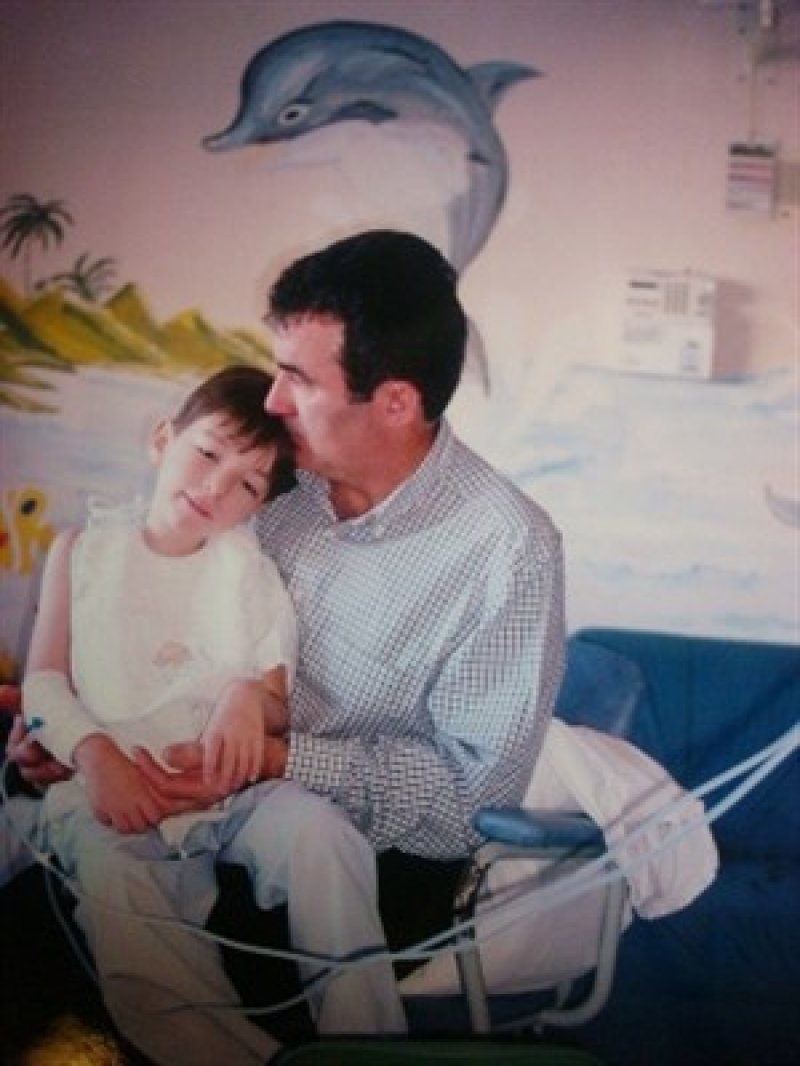It’s a very rare disease, resulting from a mutation in the gene for a certain type of protein that transports cholesterol. Known as Niemann-Pick, it comes in different types. The most common types, A and B, occur mostly in Ashkenazic Jews as a result of hundreds of years of inbredding. Another type, Niemann-Pick Type C is so rare that only 500 cases have been recorded planet-wide. If there’s any ethnic association it’s with French Canadians in Nova Scotia and with Spanish speaking Americans in southern New Mexico and Colorado.
Like many rare genetic diseases, Niemann-Pick Type C is passed from parent to child with recessive genetics; to have the disease, both parents must carry the gene for the defective cholesterol transport protein. Known as the NPC gene, the genetic defect comes with terrible consequences. Gradually, fatty proteins accumulate in various organs, including the liver, spleen, bone marrow, lungs and brain. Starting in early childhood, children show difficulty in movement and development of their ability to think and reason, as if they had a kind of pediatric Alzheimer disease. The condition is generally fatal by adolescence.
But NPC may have a “silver lining” for science; its victims cannot catch the Ebola virus. That’s because Ebola and related viruses require the cholesterol transporter protein that doesn’t work if the NPC gene is defective. According to a study published in Nature, the virus needs the protein in order to makes its entrance into human cells.
While such news make not invoke no more than a “geewiz” response, the story enriches discussions of genetic health issues when we see parents of children with such a horrible disease stepping up to the plate, offering their children to help with research. That’s what has happened in the case of the Hempel family, which includes a pair of twins, both afflicted with Niemann-Pick Type C. After starting a foundation for raising awareness of the very rare condition affecting their children that eventually led to a clinical trial for a possible NPC drug, the father of the twin girls, Chris Hempel, ended up helping with an Ebola study.
The idea that the presence of one disease can prevent another may sound strange, but it’s actually a phenomenon that repeats in the story of genetic medicine. Other examples include the defective gene that causes sickle cell anemia. Like Niemann-Pick, sickle cell anemia is a recessive disease; to have it, you must receive two defective genes: one from your mother and the other from your father. Carrying only one sickle cell gene from either parent does not leave a person with the disease, but he or she would have what’s called the sickle cell trait. It turns out that having the trait protects the carrier from malaria.
Why hasn’t the disease gene been eliminated by natural selection over time, as have many disease genes? Because the sickle cell gene emerged in tropical areas, where malaria is common and kills many people, there is an evolutionary explanation for why the gene would persist in the population. Any populations not having a sickle cell gene would suffer more malaria deaths compared with populations that do carry the gene.
In the case of NPC and Ebola, it’s not clear that there’s any evolutionary reason for the presence and persistence of the defective gene. Unlike malaria and the sickle cell gene, there’s no obvious geographical connection between NPC and the category of viruses to which Ebola belongs (filoviruses). But the history of science is full of surprises and that’s why it’s important to follow leads.
While the emergence of Niemann-Pick disease of all types probably was linked to nothing more than bad luck, pursuing the lead by studying the very protein that transports Ebola into cells could very well lead to effective treatments. Moreover, it presents itself as a novel strategy that may also be appropriate in other disease settings.
David Warmflash is an astrobiologist, physician, and science writer. Follow @CosmicEvolution to read what he is saying on Twitter.































